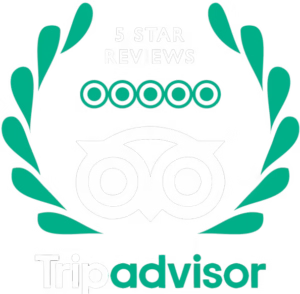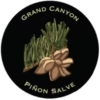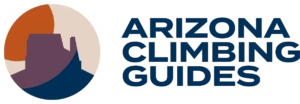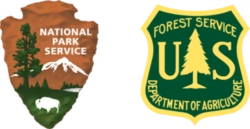This spring, I embarked on one of the most sacred and challenging journeys of my life—a descent into the Grand Canyon via the Hopi Salt Trail. I was joined by my younger brother, Peter Herron, fellow guide and good friend Josh Ahern, and Sam McCulloch, a licensed therapist with Radiant Sun Therapy and a close companion. This wasn’t just a hike—it was a rite of passage, a brush with ancient spirits, and a powerful experience that demanded everything from us physically, mentally, and spiritually.
The Hopi Salt Trail is not for the faint of heart. Located on Navajo Nation land (a permit is required to access this route), it is less a trail and more a route—steep, loose, and unforgiving. Our descent to the Little Colorado River took over three hours to cover just a little over three miles. Along the way, we were greeted by ancient pictographs, intricate rock formations, and an abundance of desert flora. But what struck me most was the sense of history—this path has been in use for thousands of years.
Before the trip, I spent time researching the traditional significance of the Hopi Salt Trail. Like many, I had always assumed it was used primarily to collect salt, a rare and precious resource in the desert. But I came to understand that this trail carries a deeper symbolic meaning. For the Hopi, this route was believed to lead to the realm of the dead, the Skeleton House—a place inhabited by Salt Woman and Masauwu, the guardian of the underworld. It also passes near the Sipapu, the place of emergence, where the Hopi believe they entered this world. To walk the Salt Trail is to enact the full circle of life—birth, death, and return.
We didn’t fully know what awaited us at the bottom. What began as a typical Grand Canyon adventure became a demanding and humbling journey. But then, paradise. Reaching the Little Colorado River, we found ourselves in a lush oasis bordered by turquoise waters and towering red walls. We swam in the cool water, soaked our feet, and ate lunch on a sandy beach surrounded by monkey flowers and birdsong.
We explored upstream, drawn by a clear side stream spilling from a narrow canyon. With every step, the enchantment grew—deep blue pools, crystal water cascading over boulders, and an almost jungle-like vibrancy in the heart of the desert. For a moment, I imagined living out my days there.
But paradise has a catch. The water, though beautiful, was undrinkable due to its high salt content. With limited potable water, we had to move quickly. We inflated our packrafts and began floating downstream toward the confluence with the Colorado River. The river was technical, shallow in places, and required navigating travertine dams—natural formations created by mineral deposits. The paddling was tough. At one point, my paddle broke, leaving me in a series of “tight spots” without much control. It was humbling, frustrating, and hilarious all at once.
Eventually, we reached camp and found drinkable water. We were bruised, battered, and completely wiped. That night, dinner was quick and sleep came fast.
The next day brought the reward: smooth sailing on the mighty Colorado. The water was big, the scenery breathtaking, and the thrill of packrafting on such a powerful river was unforgettable. We floated peacefully into camp, where we spent the afternoon doing nothing but enjoying the stillness. I lay in a grove of arrowroot with Camanche Point towering above, watching the light shift on the canyon walls. As night fell, the Milky Way appeared above. I called it the “Desert Jungle.”
Morning came early. We were up at 3 a.m. to begin the long, grueling hike out. It was as punishing as ever, and my pack still felt like it weighed 40 pounds. I was wrecked. But as any Grand Canyon hiker knows: the climb out never gets easier, you just learn to accept it.
In the end, we were better people for it.
Thank you, Canyon. Thank you.


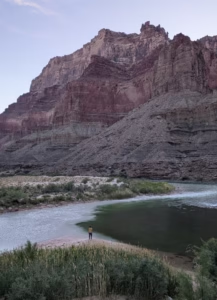
Reflections from Peter Herron:
“An ass-kicking? Sure. An eyeful? Extremely. An epic adventure that I needed and won’t forget? Definitely.
Last month I had the pleasure of joining guides Josh Ahern, Sam McCulloch, and Louis Herron on an unusual trip through the Little Colorado and Grand Canyons. To say it was a great crew would be an understatement. Everyone brought optimistic energy and a different take on the area’s history while also being in the moment and fun—with an undertone of expertise. I felt cared for, especially when, after a rough hike down, my ankle was sprained. Louie gave me his piñon salve, wrapped it, and fed me some canyon candy (ibuprofen). Within an hour my ankle felt back to tip-top shape.
The variety of hiking between the Salt route and the Tanner Trail was immense. We went from bouldering down the rugged canyon crossing of the Salt to ridgeline cruising and mile-crushing on Tanner. Packrafting the short stretches of the two rivers was super special. Each moment floating offered a unique view and exhilarating challenges navigating their rapids. Not to mention how breathtaking it is to float through the confluence of these two different-colored lifelines. We felt alive.
I can say with confidence, if you have a chance to go on a walk in The Park with anyone from Desert Hiking, do it. It will reward you beyond your deepest intentions. The Grand Canyon always does.
Thank you, Desert Hiking. Thank you, Canyon. ‘Til next time…”




